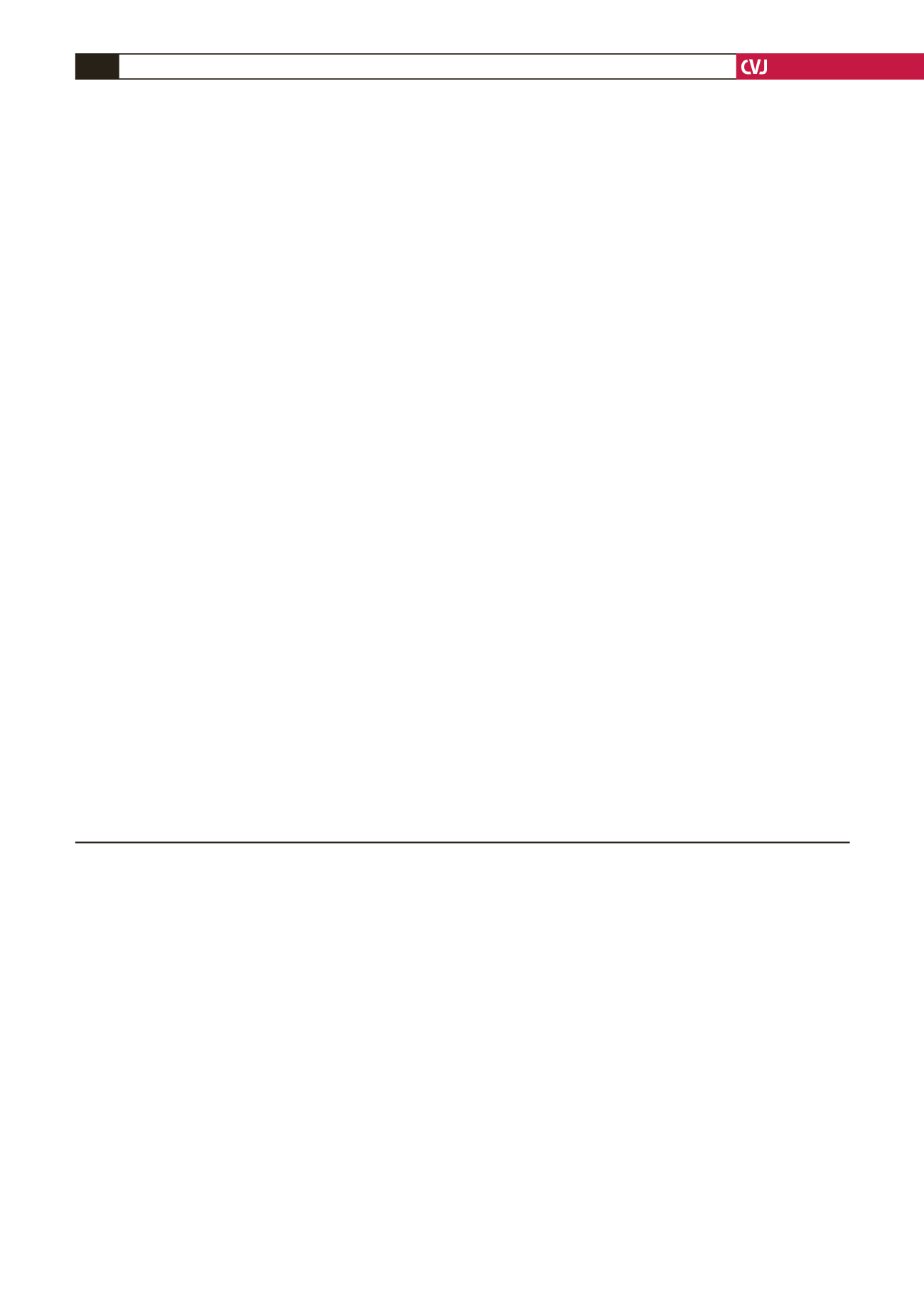

CARDIOVASCULAR JOURNAL OF AFRICA • Volume 30, No 5, September/October 2019
310
AFRICA
respectively). In Sudan, the prevalence of diabetes (15.7%)
is the highest after Egypt (17.3%) for those countries under
investigation and the rest of the world (8.6%) (Table 1).
Weaknesses
National guidelines to treat tobacco dependence are lacking, as
are locally relevant (national or sub-national) clinical guidelines
to detect and manage AF. A system to measure the quality of
care provided to people who have suffered acute cardiac events
is also not available. Although guidelines for diabetes have been
developed, its prevalence remains high.
Sustainable funding for CVD along with taxes on unhealthy
foods or sugar-sweetened beverages are lacking. Policies and
legislation banning the marketing of unhealthy foods to
minors and mandating clear and visible warnings on foods are
non-existent. There are no policies promoting diets and physical
activity to reduce CVD risk.
Priorities
Comprehensive interventions or programmes are needed to
address nutrition, physical inactivity and obesity among adults
and children, as has been done for tobacco control. Given the
high rates of obesity, overweight and diabetes, front-of-package
labelling and higher taxes are needed for unhealthy foods,
including sugar-sweetened beverages.
A percentage of the total annual government expenditure
should be set apart for cardiovascular healthcare, and the
benefits of CVD prevention and control for population health
and the economy need to be modelled.
This publication was reviewed by the PASCAR governing council and
approved by the president of the Sudan Heart Society.
References
1.
World Bank 2017.
https://data.worldbank.org/.2.
GHDE.
Global Health Data Exchange
2017. Available: http://ghdx.
healthdata.org/gbd-results-tool.3.
World Health Organisation.
Sudan STEPS Fact Sheet.
Khartoum:
WHO, 2018.
4.
World Health Organisation. Global Health Observatory (GHO) data
repository 2016.
http://apps.who.int/gho/data/node.main.1?lang=en.5.
International Diabetes Federation.
IDF Diabetes Atlas.
8th edn.
2017.
http://www.diabetesatlas.org/across-the-globe.html.6.
Republic of the Sudan, National Ministry of Health, Directorate
General of Public Health and Emergency. Non-communicable disease
National Strategic Plan 2010–2015. 2015.
https://extranet.who.int/ncdccs/documents/db, SDN_B3_Sudan NCD strategy.pdf.
7.
Zühlke L, Engel ME, Karthikeyan G,
et al
. Characteristics, complica-
tions, and gaps in evidence-based interventions in rheumatic heart
disease: The Global Rheumatic Heart Disease Registry (the REMEDY
study).
Eur Heart J
2015;
36
: 1115–1122.
8.
Federlal Ministry of Health. Rheumatic heart disease prevention proto-
col 2014. SDN_D1_Manual_2_Secondary_Prevention for RHD.pdf.
9.
FMOH-NCDs Directorate. Clinical Practice Guidelines and Standards
of Care of Diabetes Mellitus in Sudan
2011.
10. The World Health Organisation framework convention on tobacco
control (FCTC) Sudan_2018_report.pdf. 2018. Available: http://unto-
baccocontrol.org/impldb/.11. World Health Organisation. Country Cooperative Strategy at a glance:
Sudan (2008–2013) Extended to 2017. http:// www.who.int/countries/en/
ccsbrief_sdn_en.pdf.
12. Country-specific publication. 230% tax custom letter.pdf. 2016.
13. Salieh M, Bashir S, Elmouse HK,
et al.
Participating in global tobacco
research: the experience of a low-income country, Sudan. Paris, France:
International Union Against Tuberculosis and Lung Disease, 2009.



















